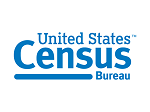Library Research and Statistics Websites
-
ACRL (Association of College & Research Libraries) Academic Library StatisticsACRL is the largest group in ALA, providing links to publications and resources.
-
ALA (American Library Association) Library StatisticsThe ALA Library Statistics website provides library fact sheets, quotable facts about America's libraries, and research on libraries and librarianship.
-
ARL (Association of Research Libraries) StatisticsFind statistics about academic libraries and tools for assessment from the Association of Research Libraries.
-
Colorado State Government Statistical InformationColorado state agencies offer statistical data and publications. Current materials can be borrowed from the State Publications Library.
-
IMLS (Institute of Museum and Library Services)The IMLS (Institute of Museum and Library Services) website provides data sets, publications, program evaluations, and research resources.
-
LRS (Library Research Service)Access research and statistics on libraries and librarianship in Colorado and the U.S. Visit the LRS website for additional resources and the ROI (return on investment) calculator.
-
NCES (National Center for Education Statistics) Library Statistics ProgramThe National Center for Education Statistics runs a Library Statistics program that offers data, publications, and tools related to school libraries.
-
EDUCAUSE Horizon ReportThe EDUCAUSE Horizon Report highlights trends and challenges affecting academic and research libraries and is updated annually.
-
OCLC ResearchPublications and reports, newsletters, and publications from OCLC Research.
-
Placements and Salaries Survey 2022The Library Journal does an annual survey of what librarians earn and where they work.
-
Census.gov This link opens in a new window
 Offers vital data on the nation's population and economy, including the Decennial Census, Economic Census, Census of Governments, American Community Survey, and Economic Indicators.
Offers vital data on the nation's population and economy, including the Decennial Census, Economic Census, Census of Governments, American Community Survey, and Economic Indicators.
Colorado School of Mines
-
Career CenterThe text covers placement rates, job outlooks, industry trends, and potential employers.
-
Multicultural Engineering Program (MEP)Minority Student Enrollment Trends
-
Women in Science, Engineering and Mathematics (WISEM)Statistics -- Includes both CSM and US data.
State of Colorado
-
Colorado Commission on Higher Education (CCHE)The Colorado Commission on Higher Education (CCHE) was established in 1965 to replace an informal group focused on higher education issues.
-
Colorado Education StatisticsFocus on K-12 education; includes graduation rates.
-
College WebsitesLists at Colorado Department of Higher Education
Organizations and Publications
- Annual "Trends" articles in industry journals, for example Chemical & Engineering News "Trends in Academic R&D Spending."
- Theme articles in higher ed journals, for example the Chronicle of Higher Education's: "A new standard of measuring doctoral programs" (1/13/07, A8-A13).
- State agency websites on higher education statistics, particularly on student demographics and graduation rates.
- University websites, which may include budget, enrollment, and faculty or student demographics.
National Statistics and Data
-
ABET (Accreditation Board for Engineering and Technology)ABET promotes academic excellence, integrity, and innovation in higher education, valuing diverse perspectives and experiences.
-
American Association of Engineering Societies (AAES)The American Association of Engineering Societies promoted engineering knowledge until its dissolution in 2020.
-
ASEE Statistics on College Engineering ProgramsASEE releases annual data on U.S. engineering colleges in the "Profiles of Engineering and Engineering Technology."
-
Chronicle of Higher Education Facts and FiguresIncludes faculty productivity. Note: Subscription required for full text access
-
National Center for Education Statistics (NCES)From the National Science Foundation (NSF).
-
IPEDS (Integrated Postsecondary Education Data System)Admissions, tuition rates and financial aid, enrollment, demographics, graduation rates.
-
National Action Council for Minorities in Engineering (NACME)NACME provides scholarships and resources to develop qualified STEM candidates.
-
NCSES | Explore DataBudget, student and faculty demographics.
-
Open Doors Online, Institute of International EducationData on foreign students in the US and US students studying abroad.
-
Pew | Internet & TechnologyA project of the Pew Research Center, provides data sets of internet and technology use since 2000.
-
NCSES | Explore DataBudget, student and faculty demographics.
-
NCSES Survey Data This link opens in a new window
 NSF's statistical data portal for science and engineering at U.S. academic institutions.
NSF's statistical data portal for science and engineering at U.S. academic institutions.
Educational Rankings
Various methodologies have been developed to rank institutions of higher education. The following include a few of the major systems as well as overviews about the systems.
-
Academic Ranking of World Universities (ARWU)Annual rankings published by the Center for World-Class Universities and the Institute of Higher Education of Shanghai Jiao Tong University, China. Includes rankings for engineering and math programs.
-
Carnegie ClassificationsFrom the Carnegie Foundation for the Advancement of Teaching, leading framework for analyzing U.S. higher education institutions, with data back to 1970.
-
Institute for Higher Education Policy (IHEP)Nonpartisan, nonprofit organization focusing on student access to higher education. Publishes reports on issues with institutional ranking.
-
Times Higher Education (THE)International university rankings for the top 50 in engineering and IT, based on the 2010 Global Institutional Profiles Project by Thomson Reuters.
